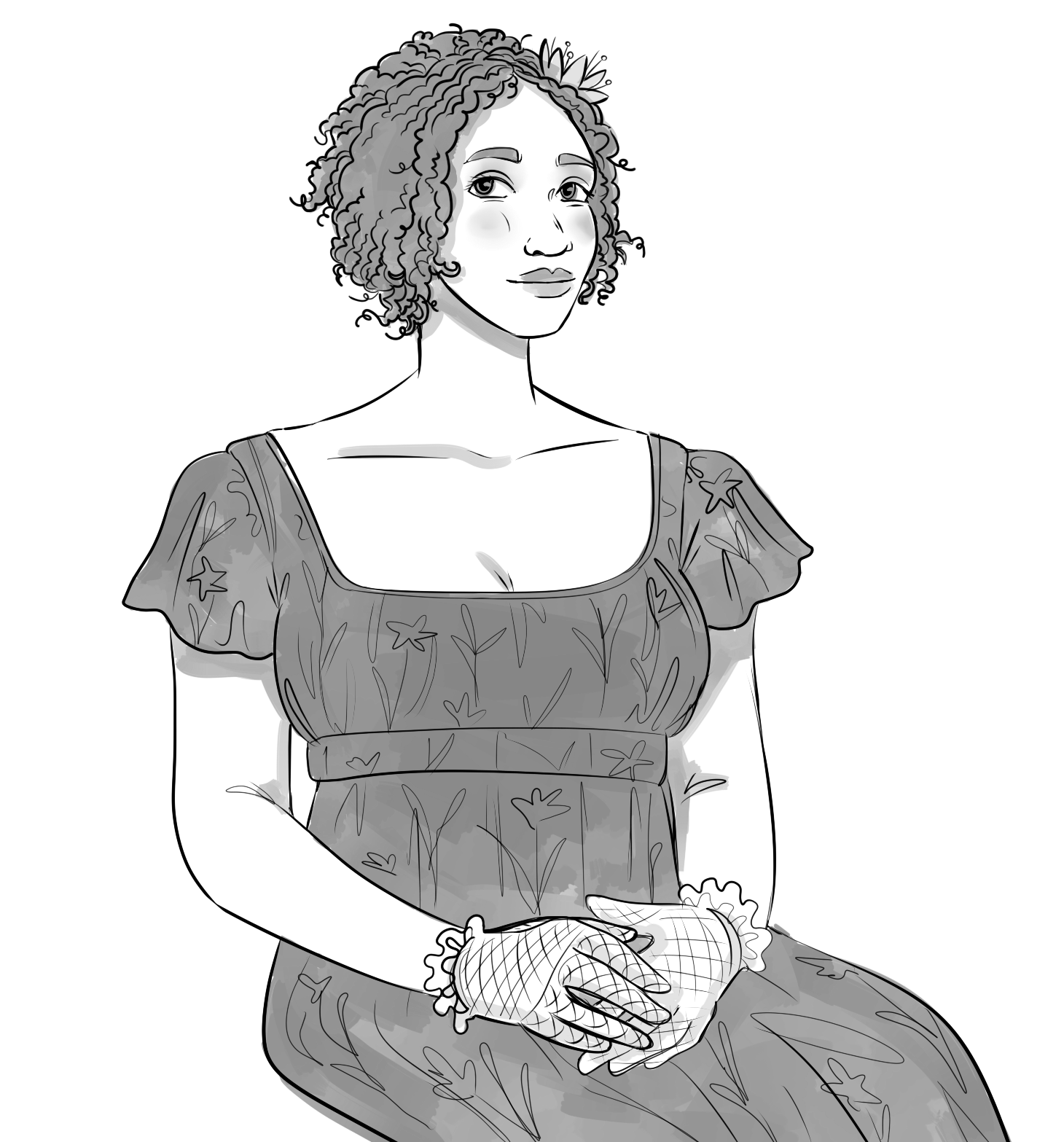
On Christmas Day, “Bridgerton,” a Regency-era romance drama produced by Shonda Rhimes, was released on Netflix. The eight-episode series worked its way up to Netflix’s Top Ten list, quickly becoming its fifth most-watched show ever and later its biggest series of all time, according to Deadline. The show mainly centers around the Bridgerton family.
The first season follows the eldest daughter, Daphne, as she navigates the elite Regency marriage market to find a love match. She manages to fall in love with the guarded and dreamy Simon Bassett, the Duke of Hastings. All the while, Lady Whistledown, an elusive gossip columnist, covers every event and scandal of the debutante season.
When I watched “Bridgerton,” it felt like a combination of “Gossip Girl” and Jane Austen’s “Pride and Prejudice.” However, one important aspect of the show caught my eye: despite being set in 1800s England, people of color play numerous main roles, and there is hardly any mention of race itself. In USA Today, the show’s creator, Chris Van Deusen, said, “We wanted this show to reflect the world we live in today.”
In the United States, the discussion of race is more wide spread amid a new reckoning with the death of George Floyd and the Black Lives Matter protests during the summer of 2020. England is no exception, as we saw with the Duke and Duchess of Sussex, Prince Harry and his wife, Megan Markle, leaving the Royal Family due to discriminating sentiments from the press and the family itself.
The United Kingdom’s history is different from the U.S.’s in that slavery was abolished there in 1833 — 20 years after the year in which “Bridgerton” takes place — according to Britannica. This predates the Emancipation Proclamation by roughly 30 years. However, our histories are deeply interconnected, since America was most notably colonized by the British.
Therefore, to entirely leave out race from the show’s narrative when, for example, the queen and the Duke of Hastings are Black, is unrealistic. Being a person of color in power in that era would have had major historical and personal meaning.
The only mention of race is in a quote said by Adjoa Andoh, who plays Lady Danbury: “We were two separate societies, divided by color until a king fell in love with one of us. Love, your Grace, conquers all.”
Only having race brushed over in a summary about the magic of love creates an idealized history where we are in a post-racial world. Sadly, that is not where we are.
The Duke Hastings is portrayed by Regé-Jean Page, and in that era, a duke of color would be a rarity or considered a product of an illegitimate relationship. The same can be said for Queen Charlotte, played by Golda Rosheuvel, as in 1813 she would not have been accepted.
Color as a whole is mistreated in “Bridgerton’s” narrative too: from Bassett’s father being portrayed as cold and disowning his son to the scandalous Marina Thompson being a pregnant, unwed woman. There is even a correlation between lighter-skinned actors being cast in lead roles while darker-skinned people of color are in minor ones.
While on set, Andoh responded to color blind casting as being a good thing, saying “It’s not, in a way, because it sort of erases race and erases people’s struggles.”
It is not about just seeing color on the screen, but how you represent it. The lasting effects of colonialism have made color not only about melanin, but something that impacts how people experience life.
We cannot pretend that history is flawless and easy to brush off with the power of love. Therefore acknowledging, the pain and oppression that shaped the development of characters is crucial.
I strongly believe “Bridgerton” deserves its accolades and is a wonderful addition to the Shondaland collection. However, the show, like society, has some ways to go when it comes to the conversation about race and representation. It is definitely a step in a better direction.
Subscribe to the Mossy Log Newsletter
Stay up to date with the goings-on at Lewis & Clark! Get the top stories or your favorite section delivered to your inbox whenever we release a new issue.

Leave a Reply